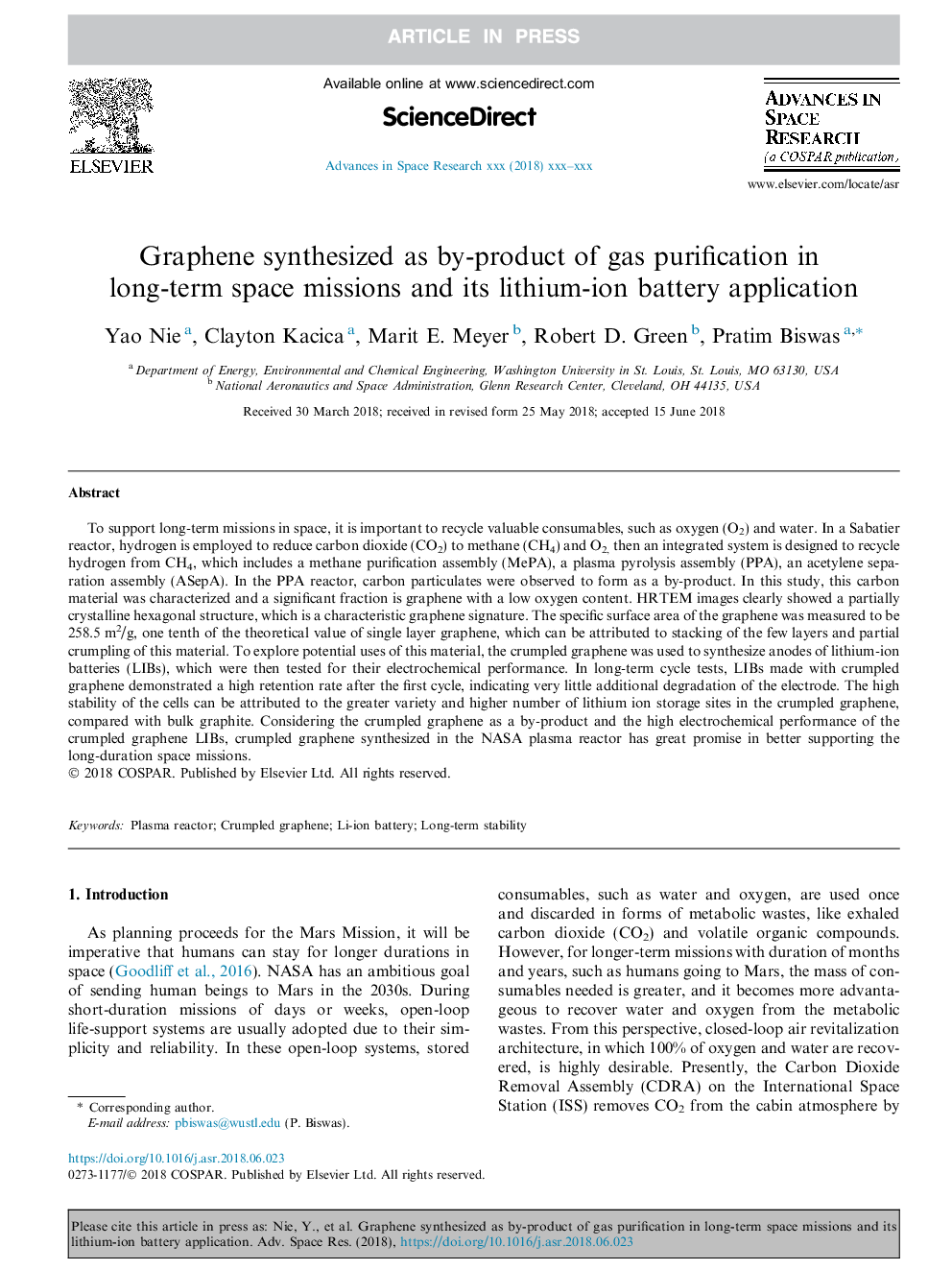| Article ID | Journal | Published Year | Pages | File Type |
|---|---|---|---|---|
| 8131647 | Advances in Space Research | 2018 | 10 Pages |
Abstract
To support long-term missions in space, it is important to recycle valuable consumables, such as oxygen (O2) and water. In a Sabatier reactor, hydrogen is employed to reduce carbon dioxide (CO2) to methane (CH4) and O2, then an integrated system is designed to recycle hydrogen from CH4, which includes a methane purification assembly (MePA), a plasma pyrolysis assembly (PPA), an acetylene separation assembly (ASepA). In the PPA reactor, carbon particulates were observed to form as a by-product. In this study, this carbon material was characterized and a significant fraction is graphene with a low oxygen content. HRTEM images clearly showed a partially crystalline hexagonal structure, which is a characteristic graphene signature. The specific surface area of the graphene was measured to be 258.5â¯m2/g, one tenth of the theoretical value of single layer graphene, which can be attributed to stacking of the few layers and partial crumpling of this material. To explore potential uses of this material, the crumpled graphene was used to synthesize anodes of lithium-ion batteries (LIBs), which were then tested for their electrochemical performance. In long-term cycle tests, LIBs made with crumpled graphene demonstrated a high retention rate after the first cycle, indicating very little additional degradation of the electrode. The high stability of the cells can be attributed to the greater variety and higher number of lithium ion storage sites in the crumpled graphene, compared with bulk graphite. Considering the crumpled graphene as a by-product and the high electrochemical performance of the crumpled graphene LIBs, crumpled graphene synthesized in the NASA plasma reactor has great promise in better supporting the long-duration space missions.
Related Topics
Physical Sciences and Engineering
Earth and Planetary Sciences
Space and Planetary Science
Authors
Yao Nie, Clayton Kacica, Marit E. Meyer, Robert D. Green, Pratim Biswas,
